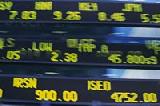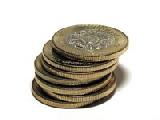
 |
|
| Financial Terms | |
| Trading paper |
|
Information about financial, finance, business, accounting, payroll, inventory, investment, money, inventory control, stock trading, financial advisor, tax advisor, credit.
Main Page: money, payroll, financial, financial advisor, tax advisor, business, inventory, finance, |
Definition of Trading paper
Trading paperCDs purchased by accounts that are likely to resell them. The term is commonly used in the Euromarket.
Related Terms:Commercial paperShort-term unsecured promissory notes issued by a corporation. The maturity of Day tradingRefers to establishing and liquidating the same position or positions within one day's trading. Direct paperCommercial paper sold directly by the issuer to investors. Euro-commercial paperShort-term notes with maturities up to 360 days that are issued by companies in Insider tradingtrading by officers, directors, major stockholders, or others who hold private inside Last trading dayThe final day under an exchange's rules during which trading may take place in a particular PaperMoney market instruments, commercial paper and other.  Paper gain (loss)Unrealized capital gain (loss) on securities held in portfolio, based on a comparison of Program tradingTrades based on signals from computer programs, usually entered directly from the trader's TradingBuying and selling securities. Trading costsCosts of buying and selling marketable securities and borrowing. trading costs include Trading halttrading of a stock, bond, option or futures contract can be halted by an exchange while news is Trading postsThe posts on the floor of a stock exchange where the specialists stand and securities are traded. Trading rangeThe difference between the high and low prices traded during a period of time; commercial paperShort-term unsecured notes issued by firms. Trading SecurityA debt or equity security bought and held for sale in the near term to generate income on short-term price changes.  Ex-dividend dateThe first day of trading when the seller, rather than the buyer, of a stock will be entitled to basic earnings per share (EPS)This important ratio equals the net dividend yield ratioCash dividends paid by a business over the most Related to : financial, finance, business, accounting, payroll, inventory, investment, money, inventory control, stock trading, financial advisor, tax advisor, credit. |